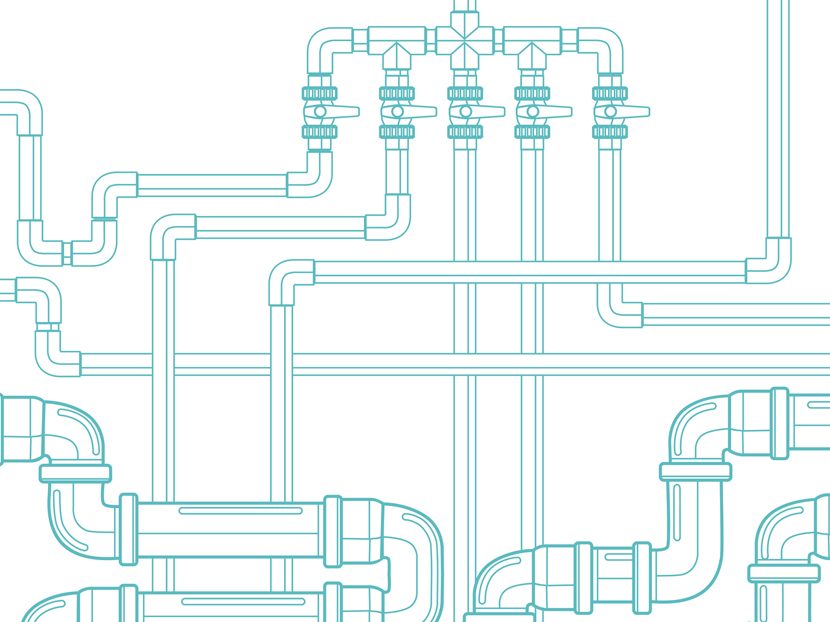The Shop Drawing Liability Debate
Design professionals should focus on meeting the applicable standard of care when it comes to specifying project materials and manufacturers.

Shop drawings are a “hot potato” when it comes to liability on a construction project. Simply stated, nobody wants to be responsible for the contents of shop drawings. The general contractor commonly negotiates with the owner for the former to be absolved of any liability for shop drawings. Even if such negotiation is unsuccessful, once the general contractor submits shop drawings to the architect and they are not rejected, the general contractor believes that it is shielded from liability.
Likewise, the architect believes that it has no liability because it approves the drawings with its “Shop Drawings/Submittal Review” stamp.
This stamp usually contains exculpatory language in a box, such as, “Submittal was reviewed for design conformity and general conformance to the contract documents only. The contractor is responsible for confirming and correlating dimensions at jobsites for tolerances, clearances, quantities, fabrication processes and techniques of construction, coordination of his work with other trades and full compliance with the contract documents.”
Contract Provisions
Since nobody wants to be responsible for shop drawings, how does one determine who may be liable? The answer, naturally, lies in the contract documents. For example, Section 3.12.8 of the AIA Document A201-2017, “General Conditions of the Contract for Construction,” published by the American Institute of Architects (AIA), provides:
“The Work shall be in accordance with approved submittals except that the Contractor shall not be relieved of responsibility for deviations from the requirements of the Contract Documents by the Architect’s approval of Shop Drawings, Product Data, Samples, or similar submittals, unless the Contractor has specifically notified the Architect of such deviation at the time of submittal and (1) the Architect has given written approval to the specific deviation as a minor change in the Work, or (2) a Change Order or Construction Change Directive has been issued authorizing the deviation. The Contractor shall not be relieved of responsibility for errors or omissions in Shop Drawings, Product Data, Samples, or similar submittals, by the Architect’s approval thereof.”
This provision, without modification, seeks to lay the blame for shop drawings at the contractor submitting them. Similarly and consistently, Section 3.6.4.2 of AIA Document B101-2017, “Standard Form of Agreement Between Owner and Architect,” provides:
“The Architect shall review and approve, or take other appropriate action upon, the Contractor’s submittals such as Shop Drawings, Product Data and Samples, but only for the limited purpose of checking for conformance with information given and the design concept expressed in the Contract Documents. Review of such submittals is not for the purpose of determining the accuracy and completeness of other information such as dimensions, quantities, and installation or performance of equipment or systems, which are the Contractor’s responsibility. The Architect’s review shall not constitute approval of safety precautions or construction means, methods, techniques, sequences or procedures. The Architect’s approval of a specific item shall not indicate approval of an assembly of which the item is a component.”
Both of these clauses, as written, seek to protect the architect and attach responsibility for shop drawings to the contractor. “As written” is an important thing to keep in mind; attorneys for these parties often modify these clauses to protect their clients to minimize, if not eliminate, potential liability.
Engineer Faces Liability
Moreover, it is still possible, based on the conduct of the design professional, to be liable when it comes to shop drawings. The case of John Grace & Co. v. State University Construction Fund, 99 A.D.2d 860, 472 N.Y.S.2d 757 (3d Dep’t 1984) is instructive.
In John Grace, the general contractor brought an action against the owner for the cost of repairs to heat exchangers which were part of a high-temperature water distribution system installed on a college campus. The owner brought the engineer (who was retained as a subconsultant by the general contractor) into the lawsuit. This engineer provided services necessary to complete the design and construction of the project.
The trial court found the owner liable to the general contractor and found the engineer liable to the owner. The Appellate Division of the Supreme Court of the State of New York affirmed the judgments against the owner and engineer. Specifically, the court found that the repairs at issue involved a design defect, which was outside of the contractor’s responsibility and expertise.
As for the engineer, the court found that by approving the design which led to the introduction of dissimilar metals in the heat exchangers, the engineer deviated from good practice. The engineer also made no inquiry into the qualifications of the manufacturer of the heat exchangers before recommending the manufacturer for the project.
As it relates to shop drawings, the appellate division explained:
“[T]he manufacturer with which [the general contractor] dealt was one of those specifically approved by the engineer, and the manufacturer’s shop drawings were ultimately approved by the engineer …. Based upon all the evidence in the record, the trial court could reasonably find that [the general contractor] constructed the system in accordance with the design provided by the engineer, as required by its contract with the owner, and that [the general contractor] installed the equipment specified in the design.”
John Grace & Co., 99 A.D.2d at 861, 472 N.Y.S.2d at 758-59.
In this case, the owner’s engineer was found liable for the design defect in the system based on its conduct. While the record is silent as to whether there were any contractual provisions as described above in the engineer’s agreement with the owner, such provisions would be irrelevant here.
The engineer was found liable for professional negligence as a result of its deviation from the standard of care. The negligence went well beyond the approval of shop drawings from the manufacturer.
Takeaways
In order to assess prospective liability for shop drawings, the engineer should work to cover all of its bases. Specifically, the engineer should pay close attention to its contract provisions, the language on any stamp it uses after reviewing submittals, and the materials and manufacturers it recommends for a project.
In John Grace, the engineer did not do its due diligence as it relates to the manufacturer, and its failure to act rose to the level of professional negligence (or breach of contract as it relates to the owner in this case). Design professionals should not simply take comfort in what they perceive as exculpatory language in their contract. Nor should they rely on the verbiage in their submittal review stamp.
Instead, they should focus on meeting the applicable standard of care when it comes to specifying things, such as materials and manufacturers for a project.





